Lower Saxony
Lower Saxony (German: Niedersachsen) is a federal state in northwestern Germany. It is the second largest state by area (47,618 km²) (after Bavaria) and fourth largest by population (nearly eight million) among the country's sixteen states. It was created after World War II by the British; most of its territory had been the Kingdom, later Province, of Hanover. There are notable differences between the various parts of the state: it took decades for anything akin to a pan-Low Saxon identity to emerge, and even that is often second to attachments to various older and smaller territorial entities
Regions
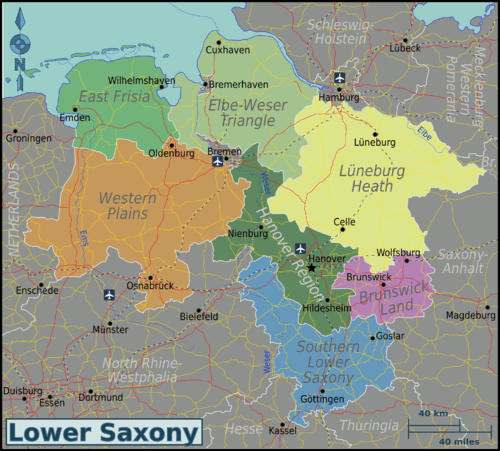
| East Frisia Coastal region with the much-visited East Frisian Islands, a very distinct regional culture and dialect, and by far the highest tea consumption in Germany. |
| Western Plains Mostly rural and agricultural lowlands and downs, containing Germany's "pig belt" as well as varied landscapes perfect for cycling and relaxing off the beaten track. |
| Elbe-Weser Triangle Coastal region framed by the estuaries of Elbe and Weser. Located in between the conurbations of Hamburg and Bremen, yet surprisingly untouched landscapes. |
| Lüneburg Heath Extensive and sparsely populated flatland, covered by meadows, scrubs and light forests. Mostly known for its heather bloom in August and early September and its original sheep race. |
| Hanover Region Surrounding its capital, this is clearly the state's centre in terms of population, economy and transport. |
| Brunswick Land This region that used to be a state of its own, features cities rich in history as well as modern industrial sites, most notably Wolfsburg, a whole city dedicated to Germany's biggest automaker. |
| Southern Lower Saxony The hilly and mountainous parts of the state, containing parts of the Weser and Leine Uplands, Harz and Eichsfeld. Hiking and wintersport destinations, romantic small towns with half-timbered houses and lots of history. Here is Lower Saxony's highest peak: the Wurmberg (971 m). |
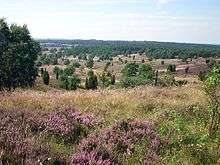
Cities
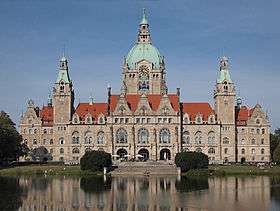
- 🌍 Hanover — state capital
- 🌍 Brunswick — the Lion City and centre of scientific research
- 🌍 Celle – well-preserved old town on the edge of the Luneburg Heath
- 🌍 Cuxhaven — a popular seaside resort
- 🌍 Göttingen — ancient university town
- 🌍 Hildesheim — wonderfully reconstructed old town around the market square
- 🌍 Lüneburg — charming historic town and gateway to the Lüneburg Heath
- 🌍 Oldenburg — cultural hub of the Oldenburg region with a beautiful castle park
- 🌍 Wolfsburg — a modern city, built from 1938 on to house workers from the newly built VW factory. While it has a reputation for being bland, the town's museums and immigrant (mostly Italian) heritage make for some interesting things to see do and eat.
Itineraries
- The Elbe Radweg one of Europe's most popular cycle routes passes through and ends here.
Other destinations
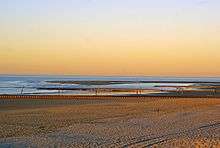
- 🌍 East Frisian Islands - among Germany's most popular summer holiday spots, many of these islands are car free and offer spectacular untouched wadden sea landscapes
- 🌍 Elm Lappwald
Understand
While Lower Saxony is home to eight million people, population is concentrated around a few major cities; Bremen and Hamburg (which are city-states not legally part of Lower Saxony), Hannover, and Brunswick. The state contains most of Germany's coastline to the North Sea, as well as livestock grazing lands, and vast natural sceneries, such as Lüneburg Heath and Elm Lappwald. Like most German states, it only came to be following World War II and for quite some time, people felt more kinship to former lands like the Electorate of Hanover, Frisia or various other petty states. Even today, contrasts within Lower Saxony are evident.
Public holidays
Each state in Germany can set its own public holidays. For Lower Saxony they are:
| Date | Name |
|---|---|
| 1 January 2019 | New Year's Day |
| 19 April 2019 | Good Friday |
| 21 April 2019 | Easter Day |
| 22 April 2019 | Easter Monday |
| 1 May 2019 | Labour Day |
| 30 May 2019 | Ascension |
| 9 June 2019 | Pentecost |
| 10 June 2019 | Whit Monday |
| 3 October 2019 | German Unity Day |
| 25 December 2019 | Christmas Day |
| 26 December 2019 | Boxing Day |
Talk
The predominant spoken form of German taught and spoken Lower Saxony is High German or Hochdeutsch. Although there are different accents in several regions and some grammatical variations are regionally widespread, the language closely follows written German and is thus easy to understand.
It is often said and commonly believed in Germany, that the dialect spoken in Hannover is the "best" dialect in terms of "correctness" as it is closest to the written form.
In the north, Low German or Plattdeutsch (Plattdüütsch or Platt in Low German) is widespread and even spoken alongside Hochdeutsch (Hoochdüütsch). In some areas there are even different forms of Plattdeutsch, albeit very locally.
In the north and northeast, variants of the Frisian dialects are still officially recognised and spoken by a few thousands of people. Frisian is actually more closely related to English than to German and has little to do with the various (low) German dialects also spoken in Frisia that are sometimes mistaken for it.
Whilst English is a compulsory foreign language for schoolchildren, many adults have only a basic knowledge of the language or are not confident enough to speak it. In tourist areas, many of the signs are in two or more languages. The German national railway, Deutsche Bahn, uses two languages on all their signs and, in long-distance trains, even the announcements are also made in English as well as German.
Get in
By plane
The most important airports are Hanover (HAJ IATA), Hamburg (HAM IATA) (other Bundesland, Niedersachsen-Ticket not valid), Bremen (BRE IATA) (other Bundesland, Niedersachsen-Ticket valid) and Münster/Osnabrück (FMO IATA) in the neighbouring state of North Rhine-Westphalia.
There are also some small airports with mostly domestic and seasonal services on most of the inhabited Est-Frisian islands. Unless one of the islands is your final destination or you arrive in your own plane, you are unlikely to use any of those.
By rail
The largest station in Lower Saxony is Hanover Central (Hauptbahnhof Hannover), which has hourly connexions to Hamburg, Frankfurt and Munich as well as other long-distance destinations. It is on the high speed lines from Hanover to Würzburg and Hanover to Berlin; travel times to Hamburg are also attractive.
Other large regional hubs are Brunswick (regional services to East Germany and the Harz) and Göttingen (regional services to the South Harz).
The two largest transport associations are GVH (Großraumverkehr Hannover) in Hanover and VRB (Verbundtarif Region Braunschweig) in Brunswick. Tickets for journeys within those transport association zones must be purchased before travelling as they are not available on the trains.
Bus
Along with state run regional buses covering distances of usually 50 km and less, there are private domestic and international long distance lines that serve the region and connect it to the rest of Central Europe
By road
The largest motorways (Autobahnen) are the A2 running from east to west and the A2 running from north to south. The A1 in the north is also an important link. The A2 has three lanes throughout, the A1 and A7 on those sections where traffic levels are highest. In spite of that all three motorways, especially the A2, are very busy, prone to accidents and thus traffic jams.
Large cities like Hanover and Brunswick have their own networks of city motorways.
Important federal roads (Bundesstraßen) are the B1, B3, B4 (Harz) and B6 (Buxtehude - Celle - Hanover). Several have also been upgraded to near-motorway standard, in that they have dual carriageways each with two lanes.
The density of fixed safety cameras varies from region to region, but they are especially common in the Harz even on steep sections of road. In wooded areas the risk of accidents involving wildlife is very high; wild boar in particular can cause a lot of damage to vehicles and danger to life if struck. In rural areas, straight roads with avenues of trees are also dangerous and frequently claim lives as a result of speeding or reckless overtaking.
By boat
The largest port is Hamburg which, although not part of Lower Saxony, has good road and rail connections (for regional travel, the Niedersachsen Ticket does not apply in Hamburg)
There are also limited connections (mostly cruises) along the Mittellandkanal and some services from Dutch ports (you can get to the German island of Borkum from Eemshaven (NL) for example) to German islands.
Get around
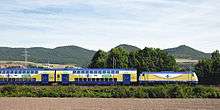
There is a special ticket called the "Niedersachsen Ticket" which offers unlimited travel by regional trains inside Lower Saxony area, up to Bremen and Hamburg in one day. This ticket is not valid in high speed trains (D, EC, IC, ICE) unless otherwise noted so make sure you board the right trains (RE, RB, S-Bahn, Metronom) when using this ticket. It is valid from 09:00 to 03:00 the following day during weekdays and the whole day on weekends. The price of the ticket depends on the size of your party with €23 for a single person and four Euros on top of that for every additional person up to five. If you are more than five people, other discounts might apply, or you can simply buy more than one group ticket. These tickets are also valid inside public transport network in some of the cities (Hanover, Hamburg, Bremen, Brunswick).
See
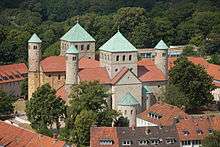
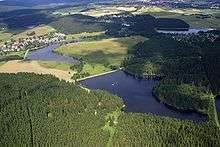
- The Wadden Sea is a UNESCO world heritage site and one of Germany's few pieces of relatively untouched nature, although it has been used and changed by human activity for most of the last 2000 years. Most tourists to this area are drawn by the unique landscape, the breezy climate (with summer highs rarely exceeding 30°C) and the wide white sandy beaches.
- The old towns of Brunswick and Lüneburg
- The zoo in Hannover
- Belsen concentration camp memorial
- Lüneburg Heath
- Medieval old town of Hildesheim with early-Romanesque St Michael's Church (one of the most important churches of early Christianity in Germany) and Romanesque Cathedral
- Rammelsberg visitor mine (that was continually operative for 1000 years), old town of Goslar and Upper Harz Water Regale
- Fagus Factory in Alfeld (Leine), designed by Walter Gropius in 1911, one of the earliest works of modern architecture
Do
Lower Saxony has many opportunities for outdoor life, especially bathing in the North Sea.
- Go Wattwandern (i.e. hiking through the mudflats during low tide, that are covered by water during high tide) only do this with a licensed guide as the flood arrives almost unnoticed and the channels that bring the water back in can rise to several meters and cut off your way back to safety
- Take a tour on a boat a watch aquatic mammals, or the fishing of Krabben (a type of crayfish typical for the area)
Eat
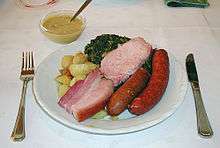
Lower Saxony has a number of traditions when it comes to cuisine that are often widespread, but with local regional variations. Many of the recipes are based on local food and tend to be basic, hearty and flavoursome, rather than haute cuisine. An exception, perhaps, is Welf Pudding, a layered pudding made from milk, eggs, wine and vanilla, that was created by one of the chefs to the royal household in Hanover.
Unsurprisingly fish dishes using, for example plaice, flounder and mackerel, feature strongly in the coastal region. Herring is served in various guises, popular ones being Matjeshering (soused), Brathering (fried) or Rollmops (pickled). Inland, trout (Forelle) and eels (Aale) are popular.
As elsewhere in Germany, pork is the most consumed type of red meat, with beef a poor second and lamb rarely seen. There are the inevitable regional types of pre-cooked sausage (Kochwurst) which is very popular in the Lüneburg Heath, the Bremen area and Schaumburg Land; local varieties include Bregenwurst, Kohlwurst, Pinkelwurst. Other meat dishes from that area are Knipp a kind of smoked sausage, venison, wild boar and hare. Another heath speciality are Heidschnucken dishes created using mutton from the local moorland sheep. Two specialities from the Hanover region are Schlachteplatte, a dish of assorted meat, and the Calenberger Pfannenschlag (also known as Rinderwurst, a beef sausage). The internationally known Braunschweiger sausage presumably originates from Brunswick. Around Gifhorn and Wolfsburg a form of black pudding called Pottwurst, served with Sauerkraut (pickled cabbage), is popular in the autumn.
The most common accompaniment is the humble potato, boiled potatoes (Salzkartoffeln, that is potatoes boild in salted water without their skin) being by far the most common. Another popular vegetable, very typical of the area, is Grünkohl (kale), sometimes known as Braunkohl especially in Bremen and Brunswick Land.
Asparagus (Spargel) is eaten as a great delicacy in Lower Saxony. It is grown mainly around the towns of Burgdorf, Nienburg, Brunswick and in the Oldenburg Münsterland as well as the southern part of the Lüneburg Heath and on the Stade Geest. Asparagus season begins around April and lasts until June 24th. As the best Spargel is grown locally and eaten only during the season, asparagus devotion can seem quasi-religious at times.
Soup is a common form of starter. Particularly popular is Hochzeitssuppe ("wedding soup"), a meat broth. On the North Sea coast there a plant called arrowgrass, known locally as Stranddreizack or Röhrkohl, grows in salt meadows immediately by the coast and is prepared, like Grünkohl, as a thick stew. Other country dishes in the coastal region are Steckrübeneintopf and Birnen, Bohnen und Speck, both types of stew.
The Germans are great cake eaters, popular regional varieties being butter cakes (Butterkuchen) and, around the Lüneburg Heath, Buchweizentorte (buckwheat cake) which is like a gateau and very tasty.
Drink
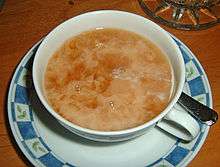
Lower Saxony is home to many breweries, for example in Jever, Einbeck, Celle, Lüneburg, Brunswick, Allersheim (part of Holzminden), Hanover, Wittingen, Peine and Göttingen.
Two of the oldest beers, brewed since the Middle Ages, are Braunschweiger Mumme and Goslarer Gose.
In general the Lower Saxons prefer coffee to tea, except in the regions of East Frisia and Friesland where tea is popular and often drunk with Kluntjes (rock candy) and cream.
A specialty found mainly in East Frisia (i.e. the North of Niedersachsen) are "Pharisäer" (Coffee with rum and a whipped cream topping) that also exist in the caffeine free version (replacing cacao for coffee) of "tote Tanten" (literally dead aunts).
Stay safe
While this area is very safe in terms of crime and even the big city issues of Hanover and Braunschweig are not all that bad, there are some natural hazards:
Swimming in the North Sea is usually only allowed during certain hours of the day. As the tides can be very strong, it is best to follow the advice and don't bathe when it isn't allowed.
Mudflat hiking with a guide is a safe fun activity. Without one it can be deadly, due to people being lost and trapped by the rising tide. Fog is more common than you might think.
Go next
- Bremen is an enclave within Lower Saxony
- Hamburg, seaport metropolis
- Saxony-Anhalt with Magdeburg and several World Heritage sites
- North Hesse with Kassel, romantic small towns and fairytale landscapes
- The Netherlands are right across the border
- Schleswig-Holstein (in practice you will often travel via Hamburg to get there)